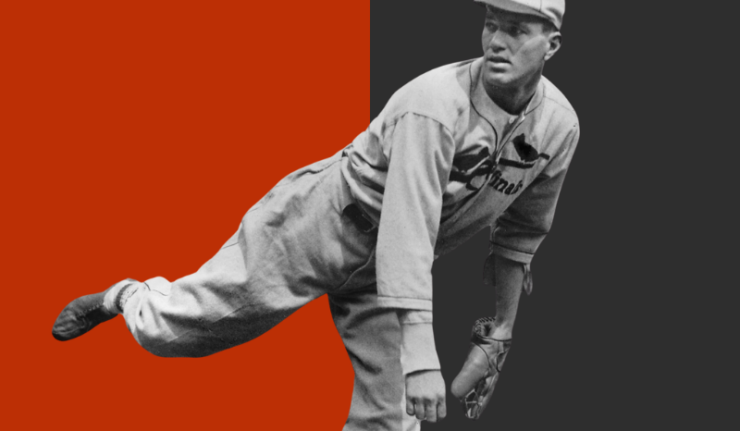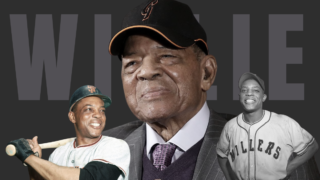“I was born with a weak mind, a strong back and a strong arm. I only went as far as the third grade and then I quit, because if I had went to the fourth I would have passed my father.” — Dizzy Dean
“If you can do it, it ain’t bragging.” — Dizzy Dean
In a remarkable career as a pitcher, Dizzy Dean carved a place in baseball history all his own. He was unaffected by stardom, a happy-go-lucky southern boy who grew to love wrist watches and tailored suits, but always remembered he grew up in the shadows of a hay wagon.
In 1934, 90 years ago (could it be?), Dean won 30 games for the Cardinals. He completed 24 of his 33 starts, and found strength in his magic right shoulder to pitch 17 times out of the bullpen between starts. He tossed seven shutouts. In the World Series, Dean started and won Games One and Seven, delivering the championship to St. Louis.
In 1935, Dizzy won 28 games, and he followed with 24 more wins in 1936. In the three year stretch of 1934-36, Ol’ Diz posted a mark of 82-32 with 12 shutouts and 23 saves. He was practically a one-man pitching staff.
The four-time All-Star was elected to the Hall of Fame in 1953, in the midst of a career as a broadcaster that nearly brought him more acclaim than anything he ever accomplished in cleats.
Comparing Dizzy Dean to Bucky Walters
Dean is connected to Bucky Walters, the other top right-hander in the National League in the 1930s. They were born nine months apart, and though Dean won his first game five years before Walters, he was actually the younger of the two. Both pitchers were known by five-letter nicknames, and both had younger brothers who became professional pitchers. Both won the MVP award in seasons in which they led their team to the pennant. They were tall with nearly the exact same body type. They both threw with their right arm. But that’s where the similarities ended.
Dizzy Dean threw the baseball very hard, led the league in strikeouts four times and had impeccable control. Walters walked a lot of batters early in his career, and was never a big strikeout pitcher despite having a good fastball. Dean thrived by pitching a lot: he loved to work out of the bullpen between starts and frequently made a dozen or more relief appearances a season. Walters almost exclusively served as a starting pitcher. Dean was boisterous, a braggart who loved to clown on the field. Walters worked quickly and was serious on the mound. Originally a third baseman, Bucky didn’t become a good major league pitcher until he was 30 years old, while Dean’s last good season was when he was 27.
Who had the better career, Dizzy or Bucky? Well, Walters had more career value, but Dean has a slight edge in seven-year and three-year peaks. After Earl Averill hit a line drive off Dean’s toe in the All-Star Game in 1937, Dizzy rushed back and changed his motion. He subsequently injured his shoulder and that was basically it. It’s very possible, though we’ll never know, that Dizzy had torn his rotator cuff, a similar injury that felled Mark Fidrych exactly 40 years later under nearly the same circumstances.
Comeback After his Radio Career
Dean made the transition to the radio booth after his arm injury, where he proved a natural at wagging his tongue. His homespun, plain-folk language made him immensely popular behind the microphone. In 1947 the Cardinals found themselves in the position of needing to pair down their radio staff. Dean was let go, and latched on with the lowly Browns. That summer was tough on Ol’ Diz: he was forced to watch the Browns stumble through the season. Late in the year he boasted “Doggone it, I can pitch better than nine out of ten guys on this staff.” General manager Bill DeWitt seized the opportunity and signed Dean to a one-day contract. On the last day of the season, 37-year old Dean started against the White Sox, his first appearance in the majors in six years. Looking much like his old self, minus ten miles per hour on his fastball, Dizzy spun four scoreless innings, got a single in his only at-bat, and left the game to applause.
Dean was elected to the Hall of Fame in 1953, only six years after his last pitch in that one-game comeback. Dizzy was only 43 years old when he became a Hall of Famer, he was hard to forget, he was on the radio and would be for years. Walters was on the ballot in 1953 but only got 10 votes. He was not disrespected by the electorate: Bucky was on the ballot for 15 years, but he wasn’t as memorable as Dean. Both men pitched their teams to a World Series title in the 1930s, but Dizzy is the only one immortalized. Later in life, when he was a national TV star, Dean said, “I don’t claim that I was the greatest pitcher who ever lived, but I was amongst them.”
A quality start is when a pitcher throws at least six innings while surrendering three earned runs or less. We have quality start data back until about 1911. Dizzy Dean has the second-best record in quality starts among the Top 100 pitchers. His record was 115-19 in games in which he tossed a quality start, that’s a .858 winning percentage, and just a tick below David Wells.




